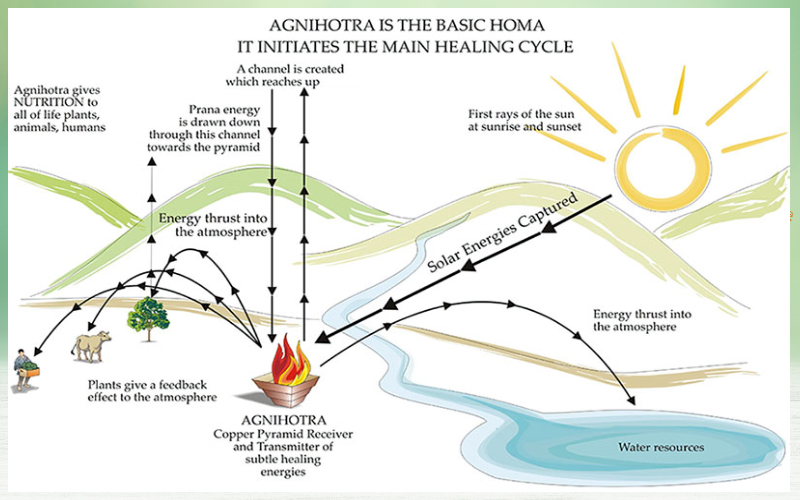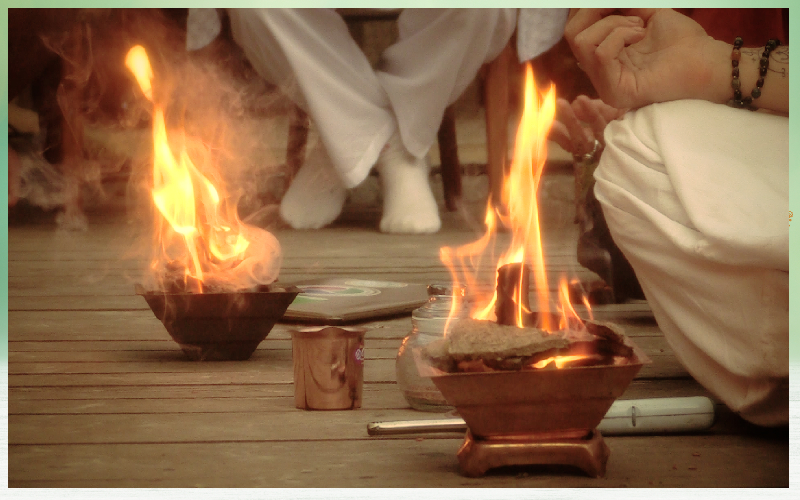
Rituals are theories put into practice. Vedas describe four āśramā-s, Brahmacharya, Gṛhasta, Vānaprasta, and Sañyasa. There are various prescribed Karma-s and havans for each āśramā. As a Brahmachārī, one's duty is to only study (What is said in Vedas under a Guru). The following Gṛhastāśramā calls for certain familial duties in addition to the duties prescribed by the Vedas. In fact, Gṛhastāśramā is the most difficult of āśramā-s because the kind of responsibilities that one has to undertake is humongous.
Many rituals that a person in Gṛhastāśramā has to follow have been lost due to the modern day life of indulgences. The Upaniṣad-s cry that Agnihotrādi Karma (Agnihotrā and other Karmas) must be practiced by a Gṛhastāśrami which will surely give them various Dṛṣṭa (Seen) and Adṛṣṭa Phalā-s (Unseen results). Vedas broadly classify the above said into five eternal principles or paths, Yagñya, Dāna, Tapa, Karma, and Svādhyāya. Purity of mind is the ultimate end of these five eternal paths.
Agnihotrā is an important Yagñya with innumerable health benefits. It focusses on cleaning the atmosphere in which we live in. The process of purgation begins with cleansing the air that we breathe. When the Prāṇa or the life-force gets purified, it assuredly leads to the mind purity and a pure mind is the condition for a person to live happily. Agnihotrā is a Vaidika Karma (Actions prescribed by Vedas) which has to be performed daily all throughout the Gṛhastāśramā. Although the conventional way of performing the Yagñya is indeed tedious, it is simplified by highly qualified pundits to suit the situation. This ritual is performed in a society to erase the indelible marks left over by air pollution.
This simple fire ritual is an economical & a swift one, performed with the easiest of ingredients available. Only a fistful number of procedures are carried out in the modified Yagñya which requires no additional formal teaching. It just requires the will and the desire to lead a successful life.
Twilight times are the best periods for the Yagñya to be performed. Two handful of complete, unbroken rice smeared with pure cow ghee is offered in the sacrificial fire made with the cow-dung patties and twigs of prescribed trees, which also are duly smeared with pure cow ghee, arranged in a pyramid-shaped copper pot. The Yagñya is initiated by lighting the holy the fire in the cow-dung patties. It is followed by the offering the oblations accompanied by recitation of simple Mantrā-s.

Significance of the Ingredients Used
Procedure
Mantrā-s prescribed for early morning. Strictly to be follow at the local sunrise time.
a. “Sūryāya Svāha. Sūryāya Idaṁ Na Mama.”
Meaning: I am offering the oblation to Sūrya. This now belongs to Sūrya. It is no more mine.
b. “Prajāpataye Svāha. Prajāpataye Idaṁ Na Mama.”
Meaning: I am offering the oblation to Prajāpati. This now belongs to Prajāpati. It is no more mine.
Mantrā-s prescribed for the evening. Strictly to be practices at the local sunset time.
a. “Agnaye Svāha. Agnaye Idaṁ Na Mama.”
Meaning: I am offering the oblation to Agni. This now belongs to Agni. It is no more mine.
b. “Prajāpataye Svāha. Prajāpataye Idaṁ Na Mama.”
Meaning: I am offering the oblation to Prajāpati. This now belongs to Prajāpati. It is no more mine.
After offering, sit and try to concentrate/meditate on the words, ‘Agni’, ‘Sūrya’, and ‘Prajāpati’ as many minutes as one feels like and can spare. This helps in unburdening the mind and you can feel relaxed and energetic.

Medical Benefits
When the smoke produced while performing the Yagñya is inhaled gently, it cures various respiratory problems.
Brain needs more blood while thinking. Buta Propiolactone emitted, while performing the Agnihotrā, dilates blood vessels and allows more supply of blood to the brain. The EEG tests show increased Alpha waves, and the brain is in a state of complete relaxation.
Agricultural Benefits
Performing Agnihotrā and the usage of ashes in the field of Agriculture has several beneficial effects. Some of them are listed below,
Conclusion
One needs to remember while uttering the Agnihotrā Mantrā-s, one must never just mumble nor be very loud. The meaning must be realized and contemplated upon. Agnihotrā is a result oriented scientific practice and is a boon to humanity. It gives everything that the life needs.
NEXT ARTICLE